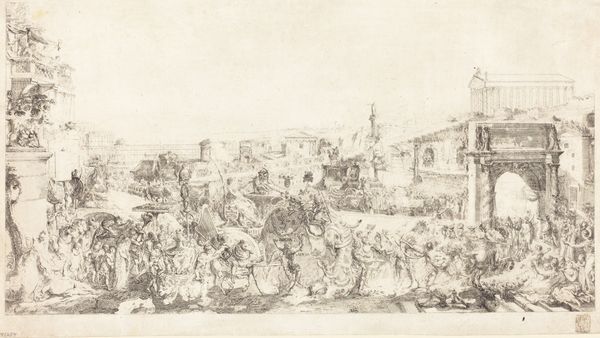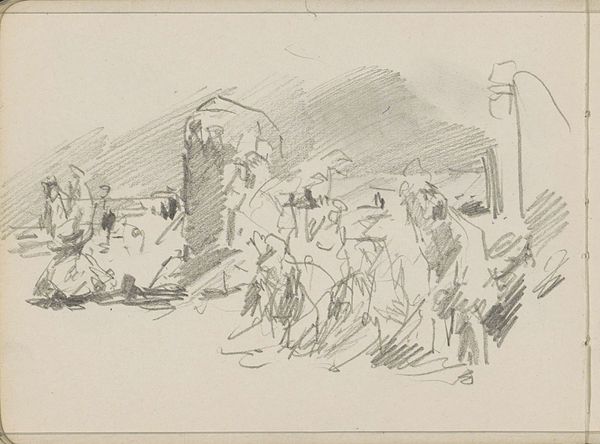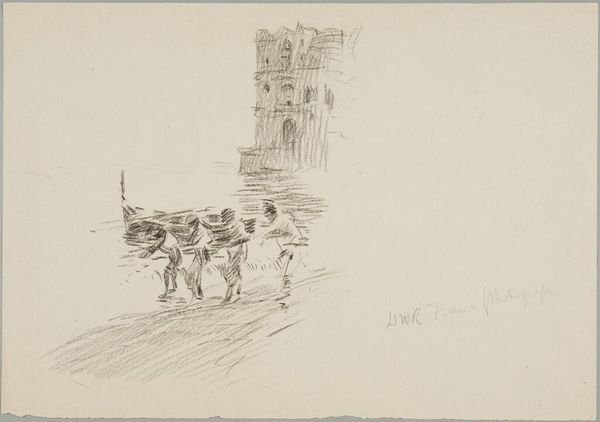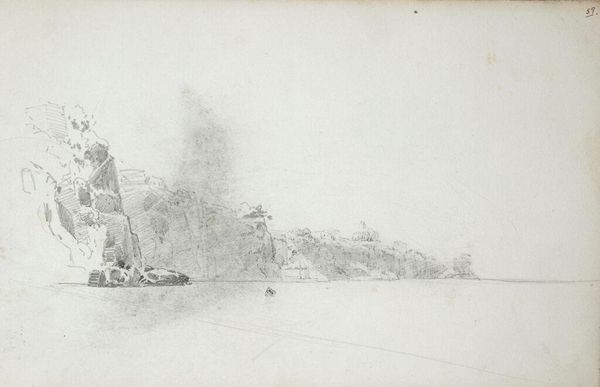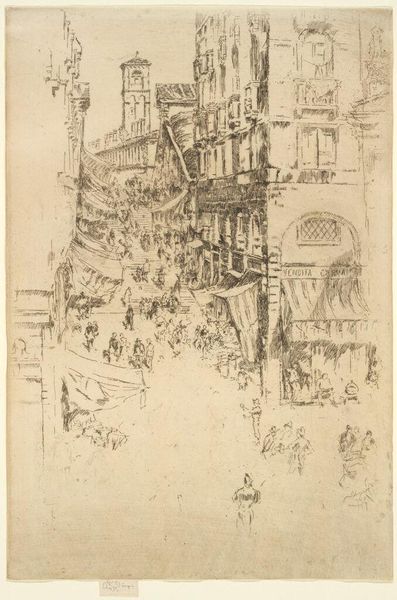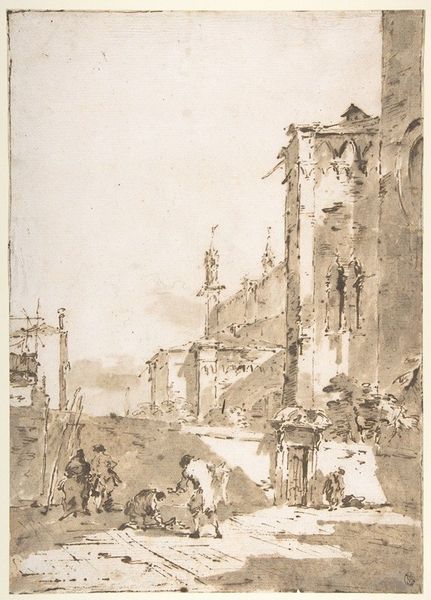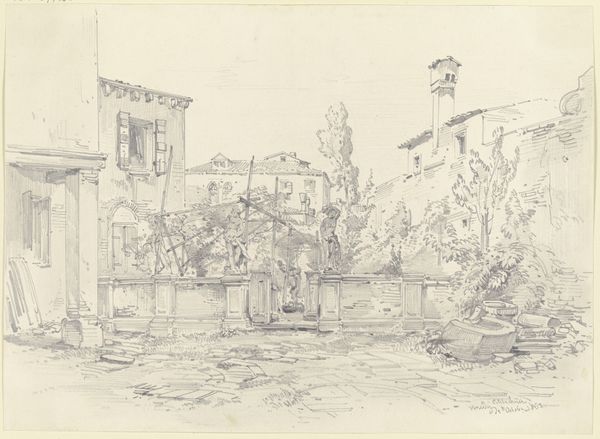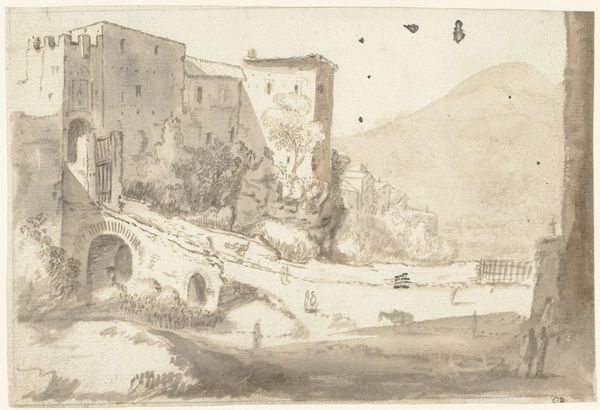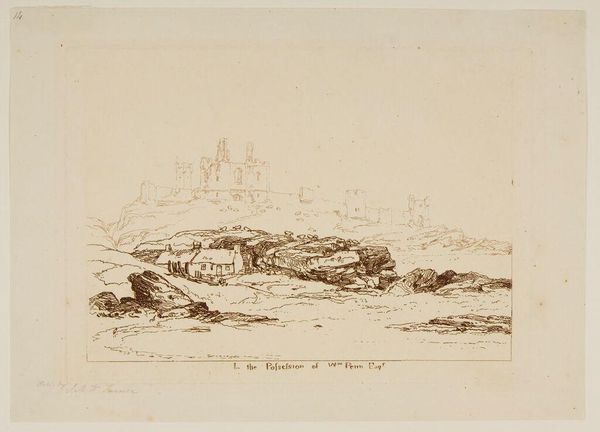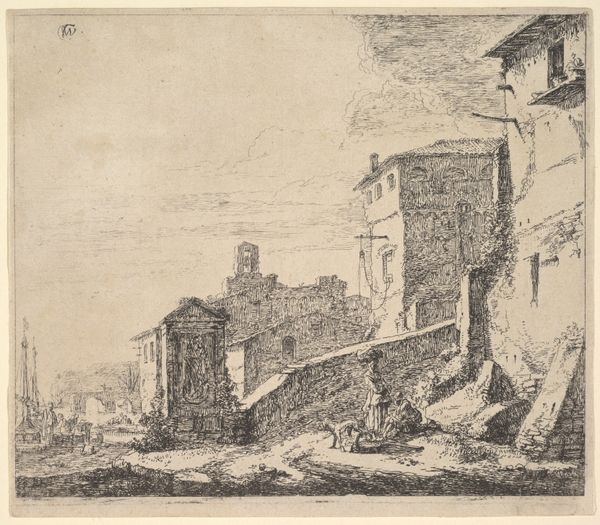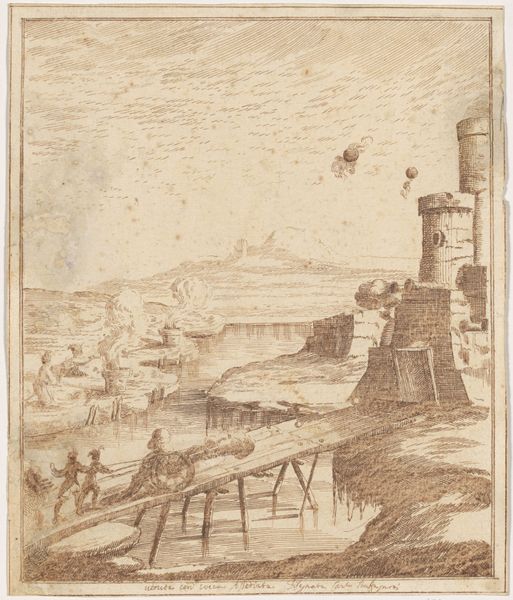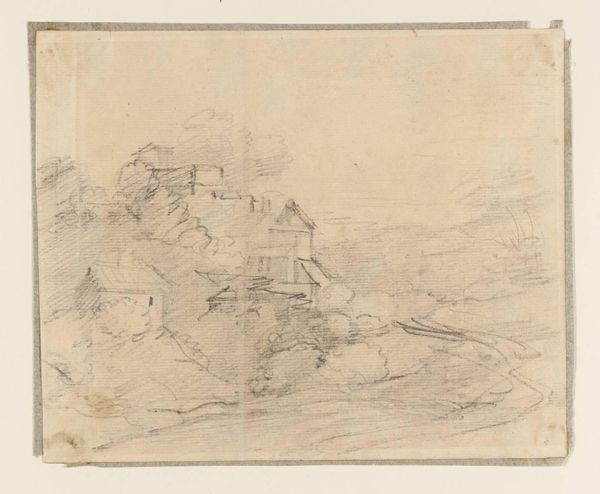
Copyright: CC0 1.0
Curator: Let's discuss Ernest Stephen Lumsden's "Holy River," currently held in the Harvard Art Museums. It's a fascinating etching. Editor: It's got this hazy, almost dreamlike quality, but the detail is quite striking, especially in the architecture. What material processes did Lumsden use? Curator: As an etching, Lumsden would have used acid to bite into the metal plate, creating those fine lines and tonal variations. It reflects the printmaking boom of the early 20th century, making art more accessible. Editor: Accessible, perhaps, but also tied to a specific social vision, the artist's experience of a place and people he encountered. How do his portrayals of labor along the river engage with colonial-era ideas about work? Curator: Lumsden’s art often romanticized the East. He captured these scenes with a delicate hand, fitting into a broader Orientalist narrative, yet his skill drew much acclaim from his contemporaries. Editor: But it’s also labor. People moving materials, probably under harsh conditions. Etching as a medium mimics this arduousness, a slow, careful process of transferring an image. Curator: It seems we're seeing the image through different lenses. I appreciate your focus on the production, while I consider the cultural context that shaped its reception. Editor: Exactly, understanding the process and the social sphere it inhabits helps us avoid simple, pretty readings.
Comments
No comments
Be the first to comment and join the conversation on the ultimate creative platform.
